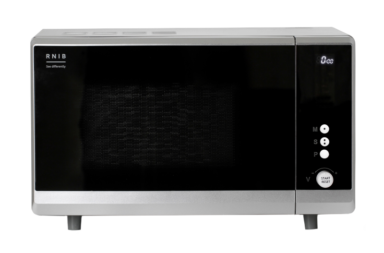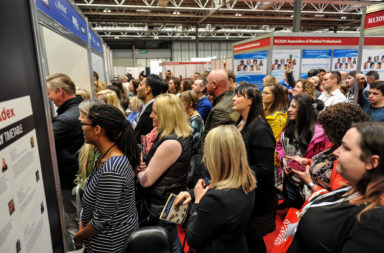This year sees 25 years since the Berlin Wall came down. To mark the occasion, Able Magazine was invited by the German National Tourist Board to visit Berlin. Their ‘Barrier Free’ program is showing how places can become truly inclusive and disability friendly. In so doing they’re enabling more disabled travellers to visit this great Capital.
Here’s another postcard from our visit:
The Otto Bock Science Centre showcases how technology can lead disabled people back to mobility and dexterity.
There are plenty of memorable landmarks and buildings in Berlin to take in but few are more arresting than the Otto Bock Science Centre.
With shades of Guggenheim meets PlayMobil, the building is a joyful white plaything rippled with curving windows. The message is that things don’t always have to conform to expectations whilst the architectural sinews imitate muscle structure and represent a fascination with the human machine.
My guide, Klara, meets me with a smile that rests somewhere between pride and enthusiasm. I get the feeling that she can’t wait to share what the Otto Bock Science centre has in store – and that knowing that I’m a disability magazine editor that she’ll have the opportunity to push me towards ‘learning’ rather than pulling me towards ‘explanation’. The lift glides smoothly and silently towards the top floor – the entire building inside and out is a tribute to great design. The quiet green and sky blue colour scheme is repeated throughout as is the theme of metal and glass that emphasises air and light; energy and life.
The Top Floor
Not too many people get to see the top floor. It’s quite an exclusive clinic that plays host to people, often from war-ravaged corners of our world. The silence and order must be refreshing in themselves after having dealt with trauma and confusion so recently. The parallel bars used for rehabilitative exercises are empty today as is the galley kitchen fitted with different styles of cupboard handles and so on that will form the basis of exploring the minutia of how the patient will now go about the simple things, like making a cup of coffee. Furthermore, the bathroom across the floor will be the place where men might learn to shave with their prosthetic hand or women learn to apply make-up. If there’s one really strange feature in this room it’s a small pile of ‘hands’ left out for demo purposes showing different levels of realism, from near naked robotic to ultra realistic – right down to the tiny hairs. Klara of course, handles them respectfully but curiously, as if they’re the sort of humdrum instruments you’d find in any office.
Back in the Science Centre there are two aspects that Otto Bock encourages visitors to explore (and challenge) – mind and body. If the body is damaged or disabled, the mind will need to step up and although some of Otto Bock’s prosthetic solutions are extraordinary, perception will play a key role within rehabilitation. Klara demonstrates this with a very simple test. Being a person with no sense of smell myself, Klara tells me that I probably have other slightly ‘overdeveloped’ senses. I thought that was a myth until I was able to identify different spheres made from different materials by touch and judgement of weight alone.
As Klara said, this is the basis of the issue. A baby born with one arm doesn’t realise that it is disabled – to the extent that it is difficult to encourage it to wear a prosthetic – yet an adult that loses an arm would struggle without a prosthetic.
Looking at Capability
Otto Bock himself was a genuine pioneer of prosthetics. His achievement of creating the first three section prosthetic leg is quietly celebrated in a corner of the science centre whilst around the place, more modern achievements utilising different components, materials and systems bring prosthetics evermore closer to the capabilities of human limbs and extremities: the first modular prosthetic of 1919 stands as the starting point to this field.
Elsewhere the Science Centre, especially under Klara’s watch teases me into accepting my strengths and weaknesses and how technology is getting better at amalgamating with the human body. The Ottobock Science Centre is a place that takes the ordinary skills of walking and using your hands and turns them into an absorbing quest for mobility and utility.
On my way out, I stroll past a bronze statue of a ‘homunculus’ whose sensory features have been emphasised in proportion with their importance. His giant hands invite me to lay my own within his palms – and that’s the point.



